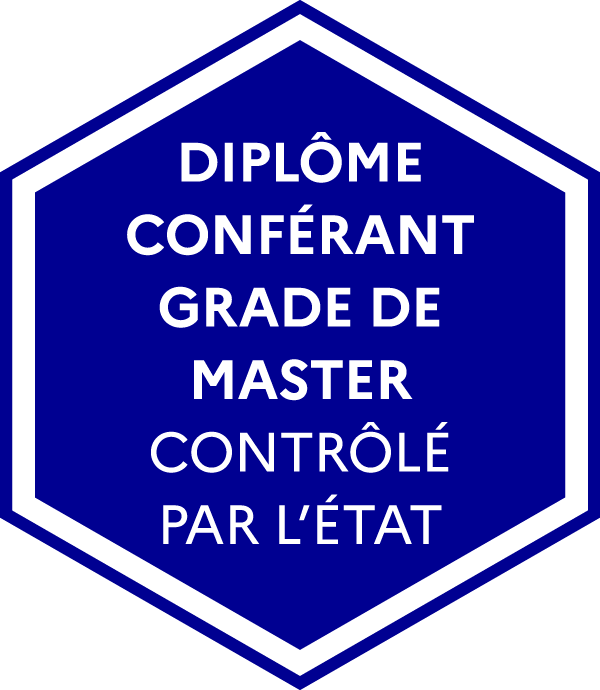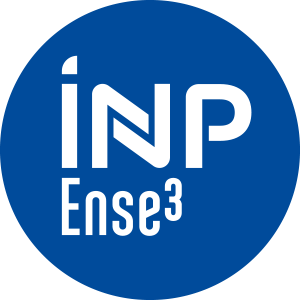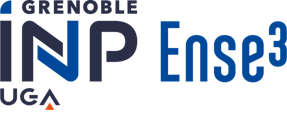Number of hours
- Lectures 24.0
- Projects -
- Tutorials 16.0
- Internship -
- Laboratory works 20.0
ECTS
ECTS 5.0
Goal(s)
Physics knowledge of materials behaviors is given. It covers magnetic, dielectric and electroactive materials and their applications from electro-technical power systems to micro-electro-mechanical systems.
Basic knowledge in Electromagnetism are introduced. Energy conversion, power flow in electrical and electromechanical systems (motors, generators, sensors, power electronic devices) are so presented. The main aims are to develop semi-analytical models used in the design process and to improve skill of students for FEM simulation of electromagnetic devices.
Learning Outcomes :
- Analyze how magnetic devices work
- Differentiate between magnetization mechanisms in magnetic materials
- Differentiate between polarization and conduction mechanisms in dielectric materials
- Identify the different types of electrical discharge in solid, liquid or gaseous insulators
Herve CHAZAL
Content(s)
Lectures and Tutorials : Soft Magnetic Materials
• Ferromagnetism : exchange energy, anisotropy and magnetostatic
• Magnetization mechanisms : domain-wall motion, moment rotation
• Diffusion in magnetic materials and magnetic losses.
Lectures and Tutorials : Hard Magnetic Materials
• Hard magnetic materials properties : ferrite, Alnico, rare earth magnets
• Design of magnetic systems using magnets : actuators and magnetic sensors
Lectures and Tutorials : Dielectric Materials
• Electrostatic basic knowledge, Dielectric material's properties
• Electric polarization phenomenon due to electric field.
• Losses in dielectric materials.
• Breakdown field strength and partial discharges in gases.
Tutorials and labworks :
• Implementing methods and using tools for analysis and design of electromagnetic devices.
• Analytical and numerical models (Use of finite element and integral methods through dedicated softwares (Flux, Inca by Cedrat))
• Examples : synchronous machines, cardiovascular support pump (variable reluctance linear actuator), coupler for wireless charging, electromagnetic pump for the transfer of liquid aluminum smelter, Magnetostatic shield of Medical Imaging Device RMN, ...
Basic knowledge in Electromagnetism
Vector calculation (vectors and vector operations, coordinate systems, vector integrals)
First session
Continous Assessment (CC1) : 2 labs reports + 1 MCQ
Final Exmaination (ET1) : 2 hours supervised written exam
Second session
Continous Assessment (CC2 = CC1)
Final Examination (ET2) : 2 hours supervised written exam
Moyenne de l’UE / Course Unit assessment = EN 50% + ER 50%
The course exists in the following branches:
- Curriculum - Master's Degree in Engineering IEE - Semester 7
Course ID : 4EU7CE14
Course language(s): 
You can find this course among all other courses.
Magnétisme et matériaux magnétiques pour l'électrotechnique, Pierre Brissonneau
Matériaux magnétiques en génie électrique 1 et 2, Afef Kedous-Lebouc
Magnétisme 1 et 2, Etienne du Trémolet de Lacheisserie, Damien Gignoux, Michel Schlenker
Magnetism I and II, Etienne du Trémolet de Lacheisserie, Damien Gignoux, Michel Schlenker
Micro-actionneurs électromagnétiques MAGMAS, Cugat Orphée
Micro-actionneurs électromagnétiques MAGMAS, Cugat Orphée
Electromagnetisme. Théorie et applications, Elie Boridy
French State controlled diploma conferring a Master's degree




